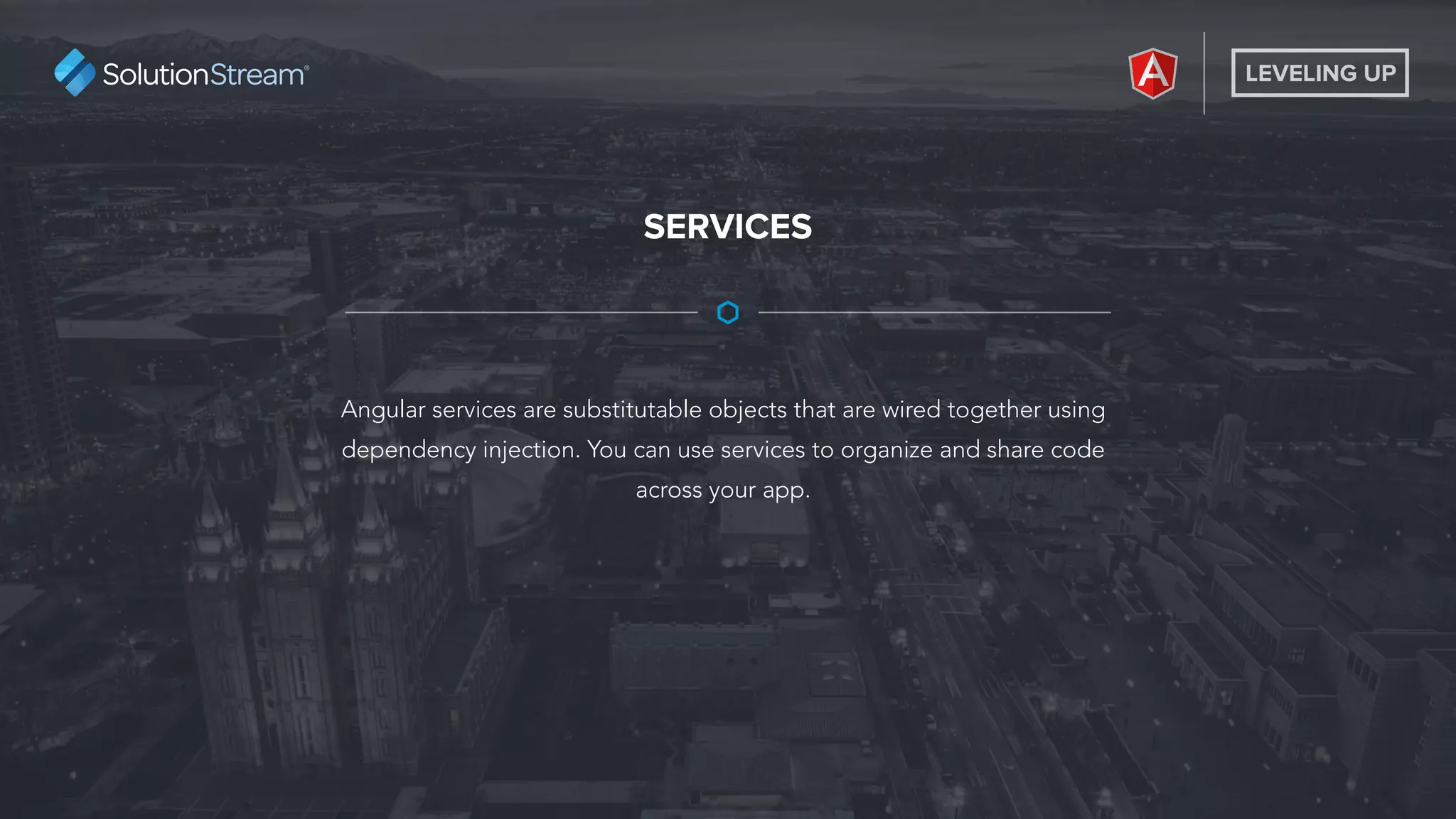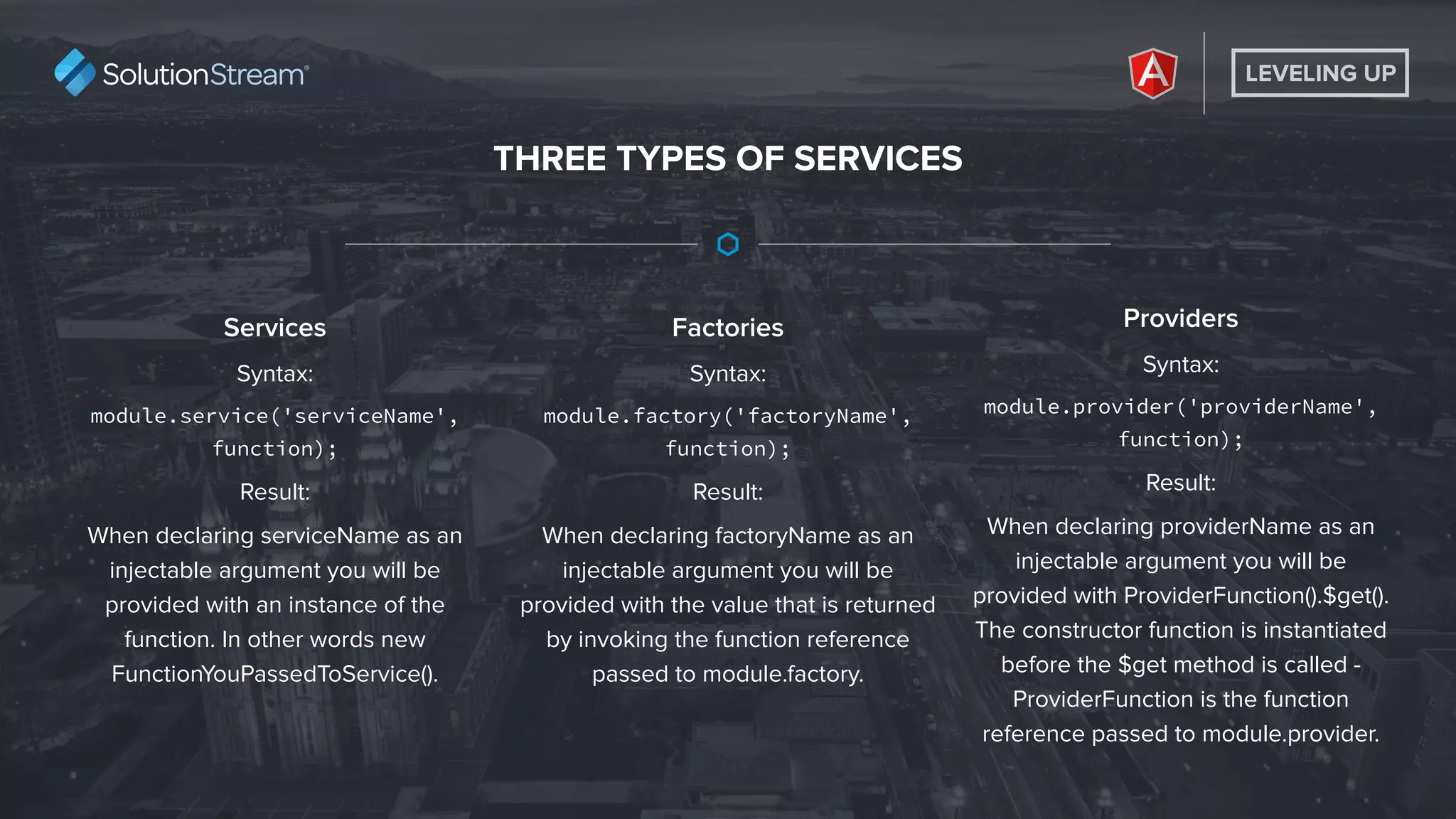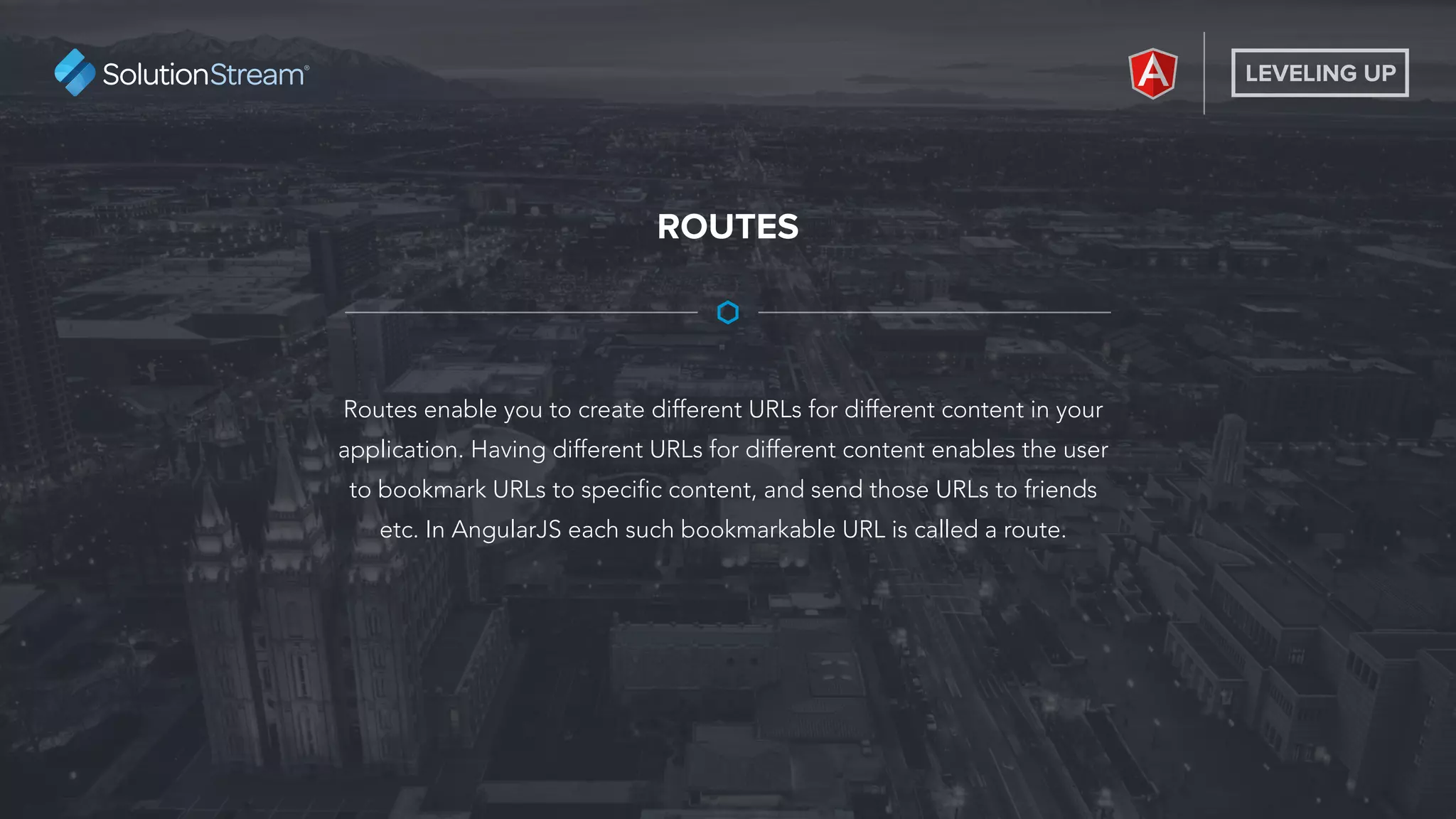The document discusses AngularJS as a framework that enhances HTML for dynamic web applications, promoting a clear separation of concerns through the MV* pattern. It introduces core concepts such as two-way data binding, directives, filters, and dependency injection, which facilitate efficient application development. Additionally, it explains the importance of routing for creating bookmarkable URLs to improve user experience.

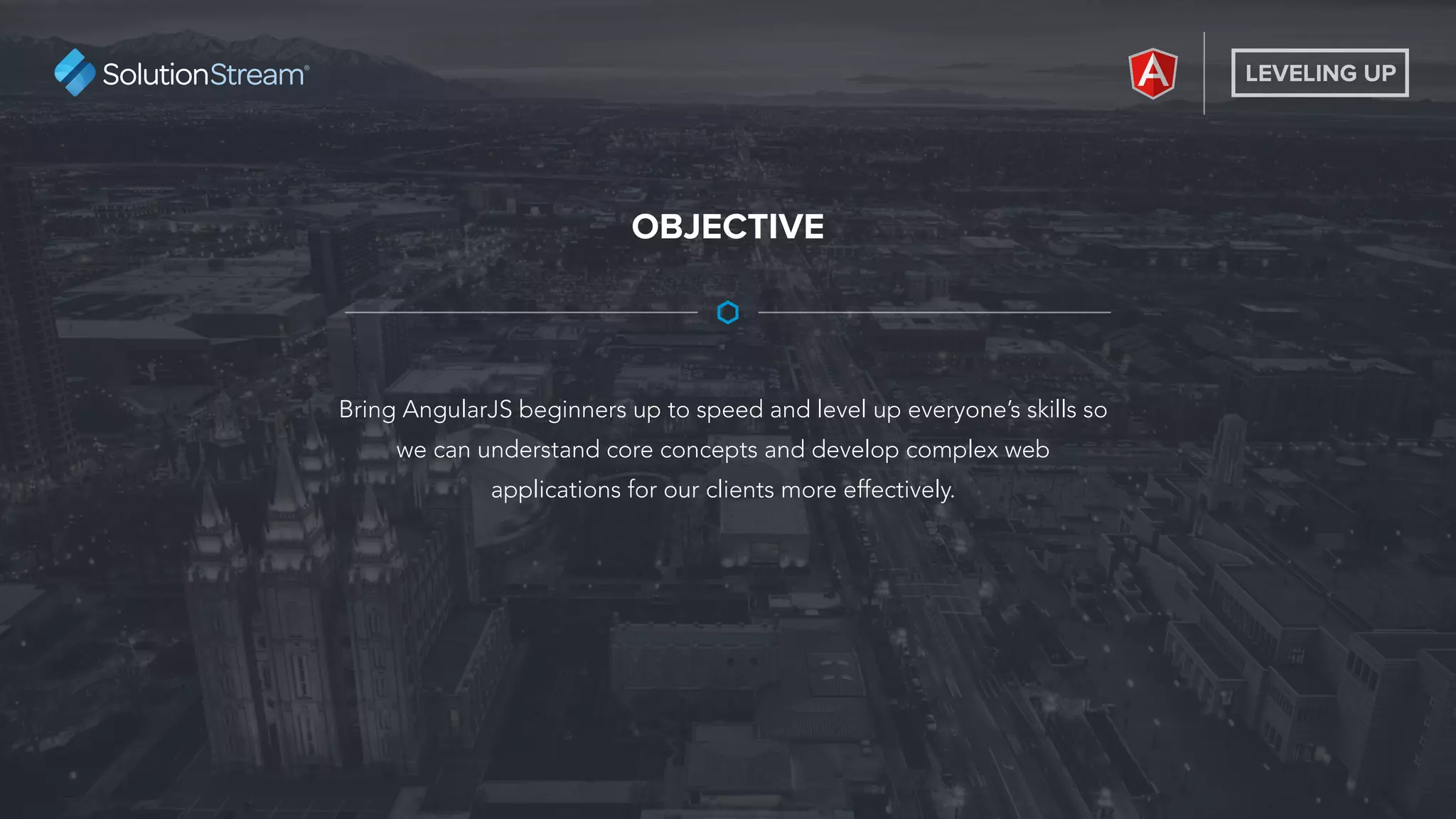

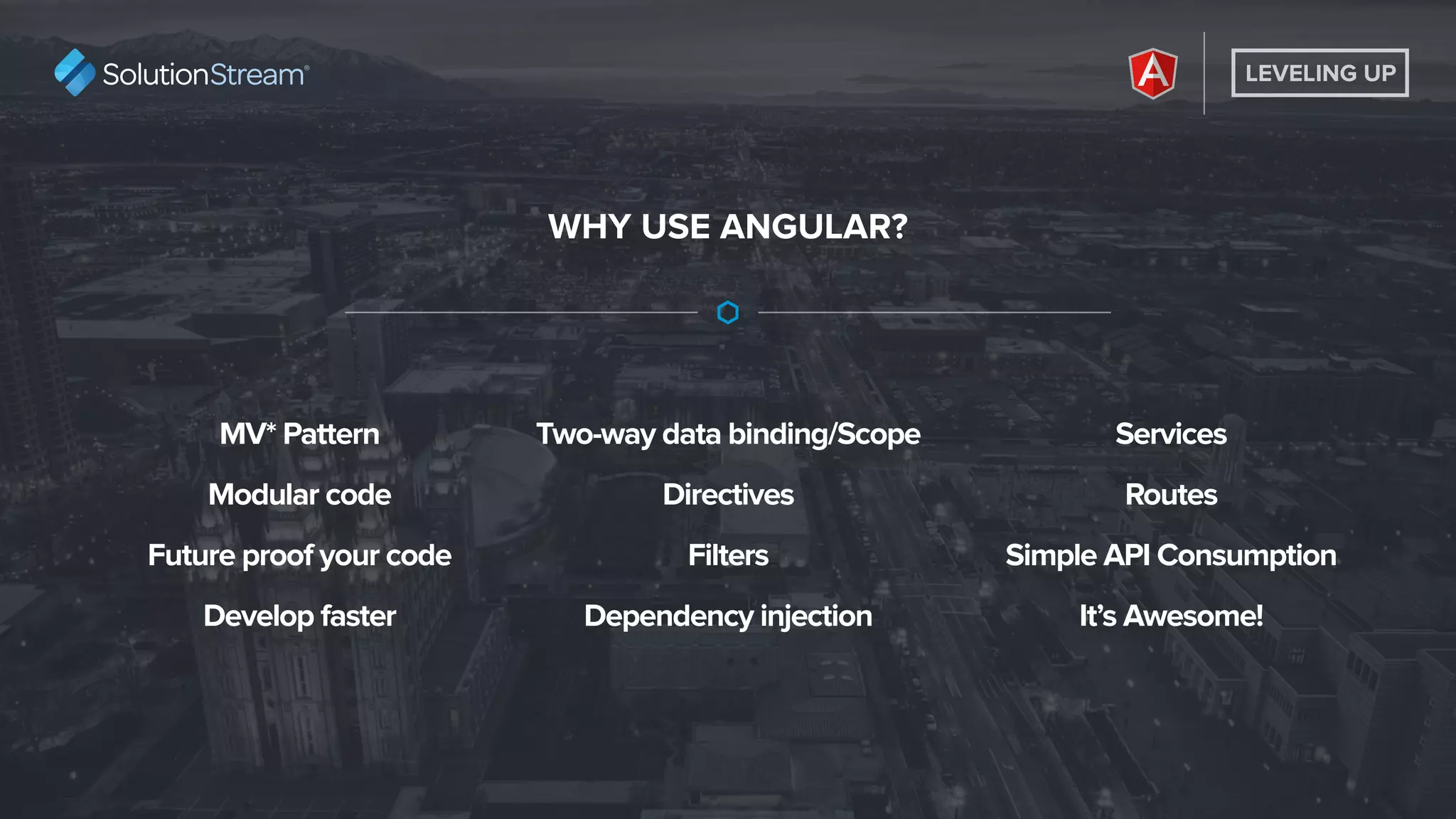
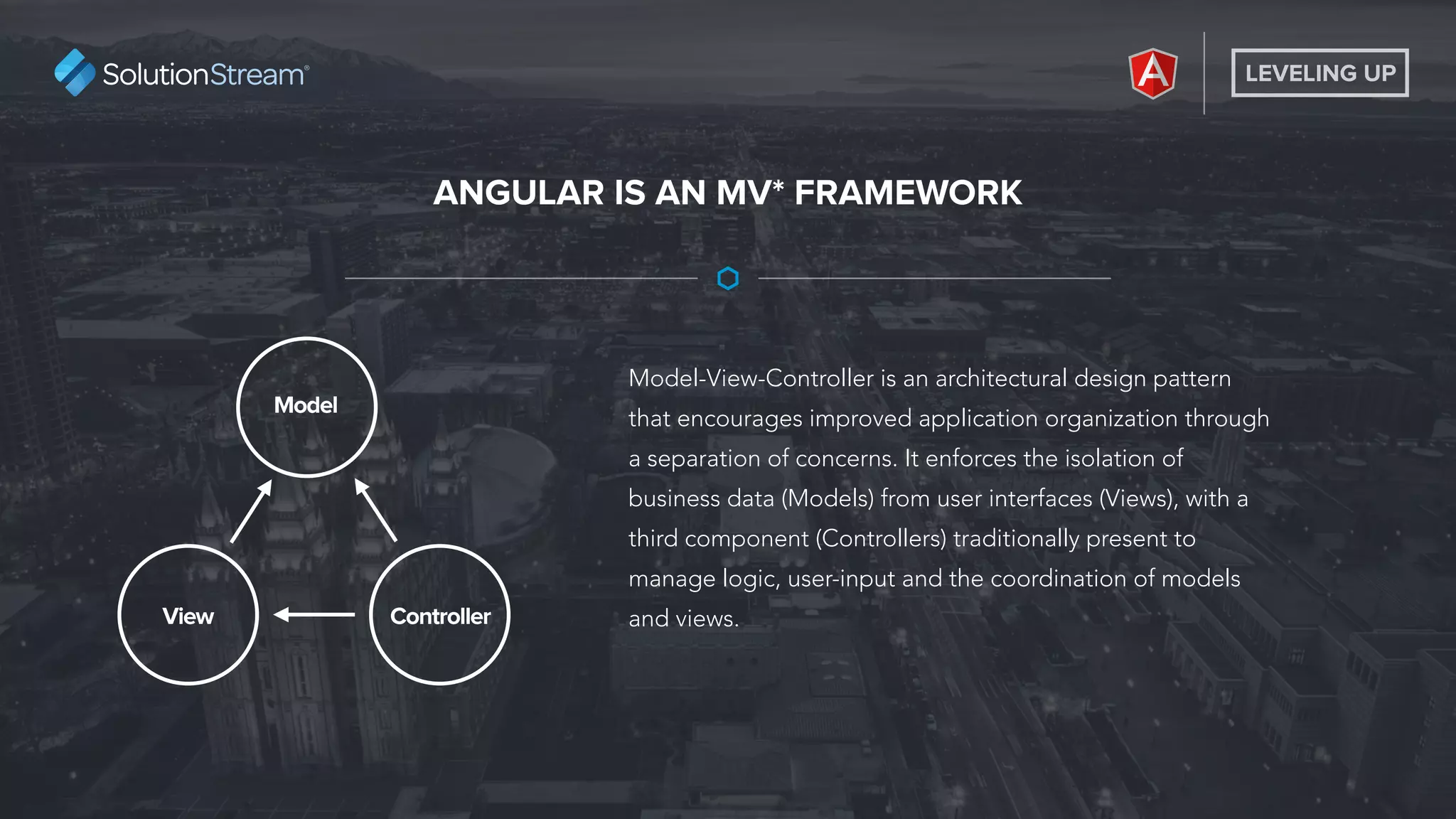
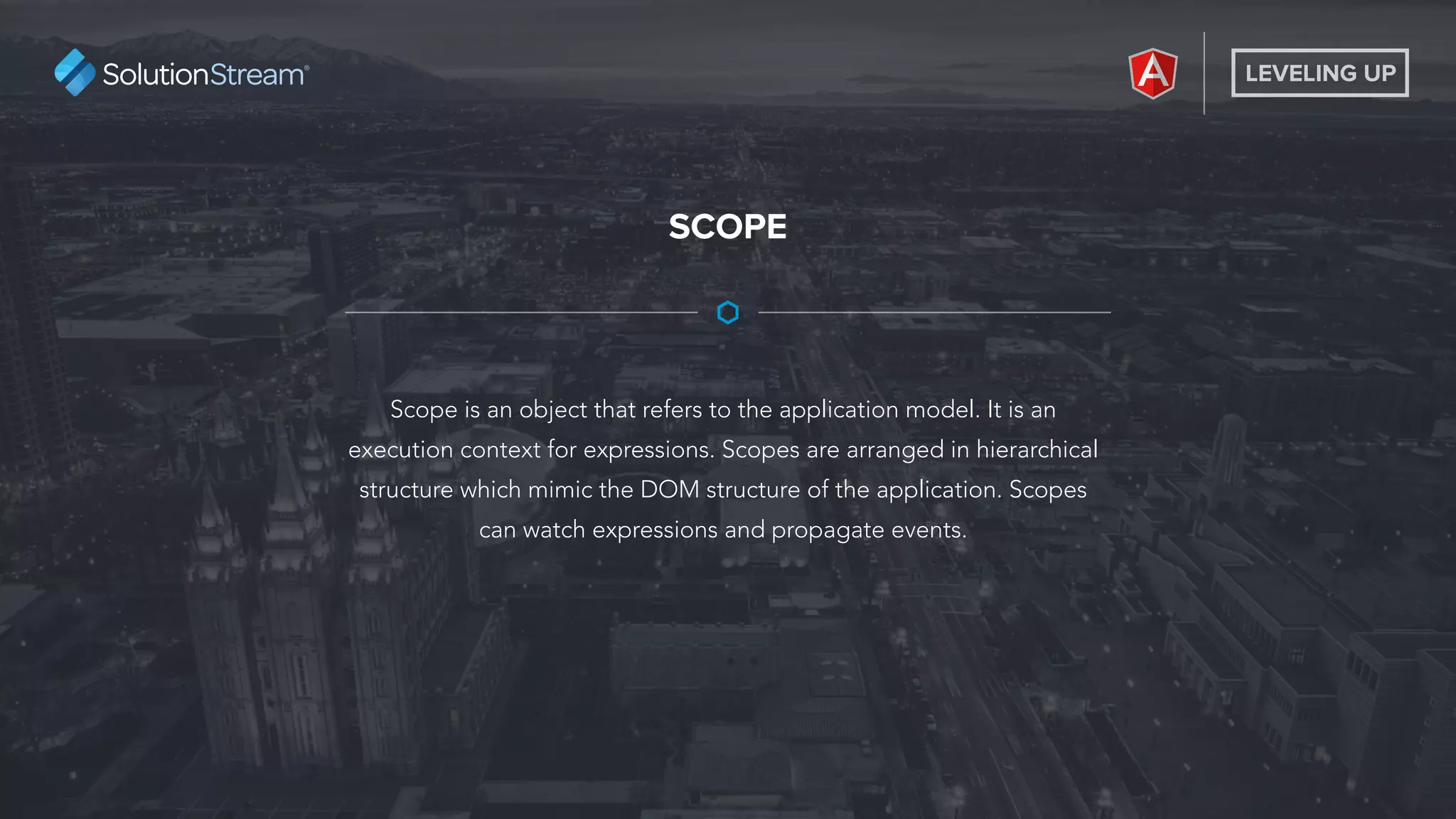
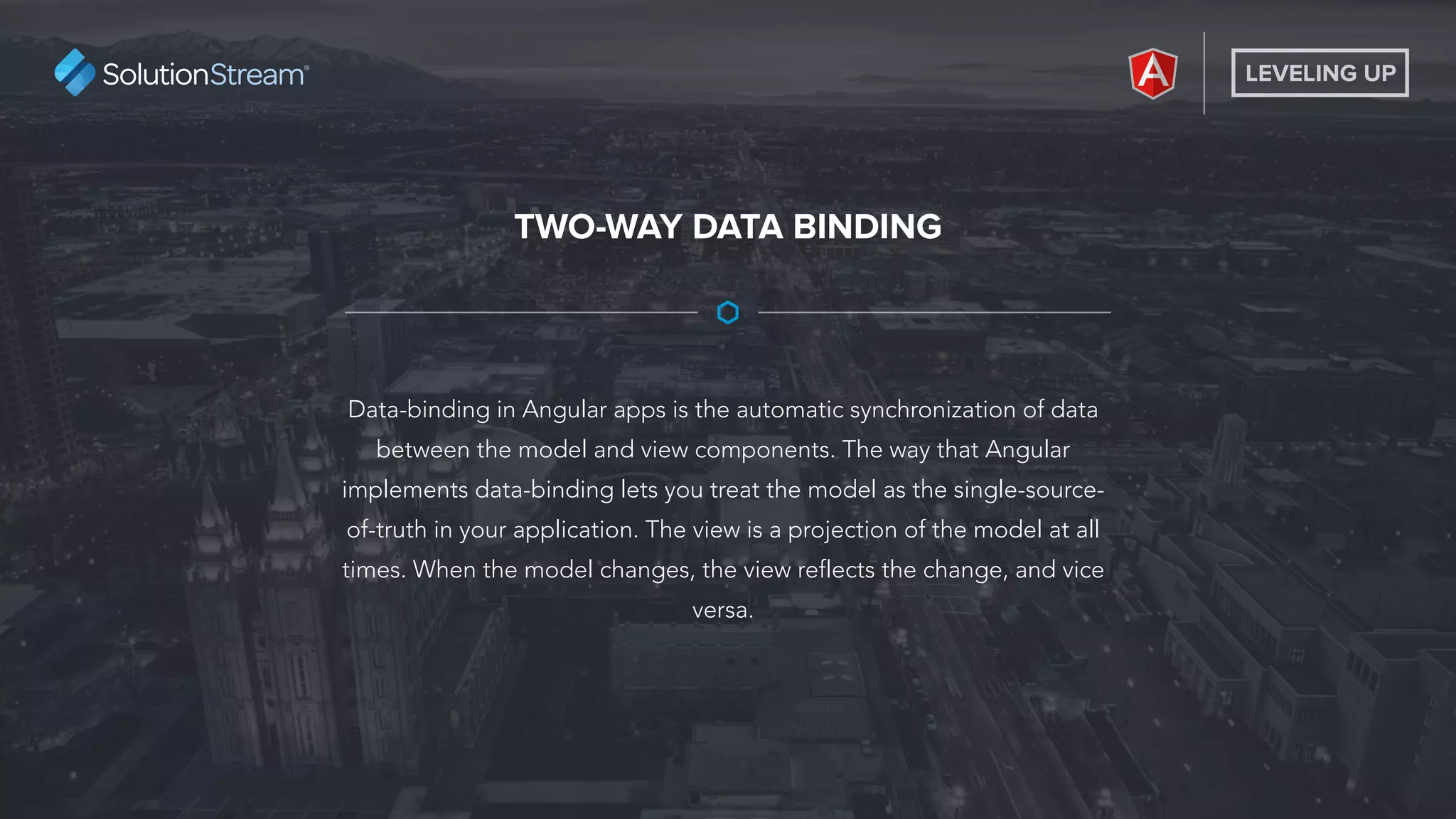
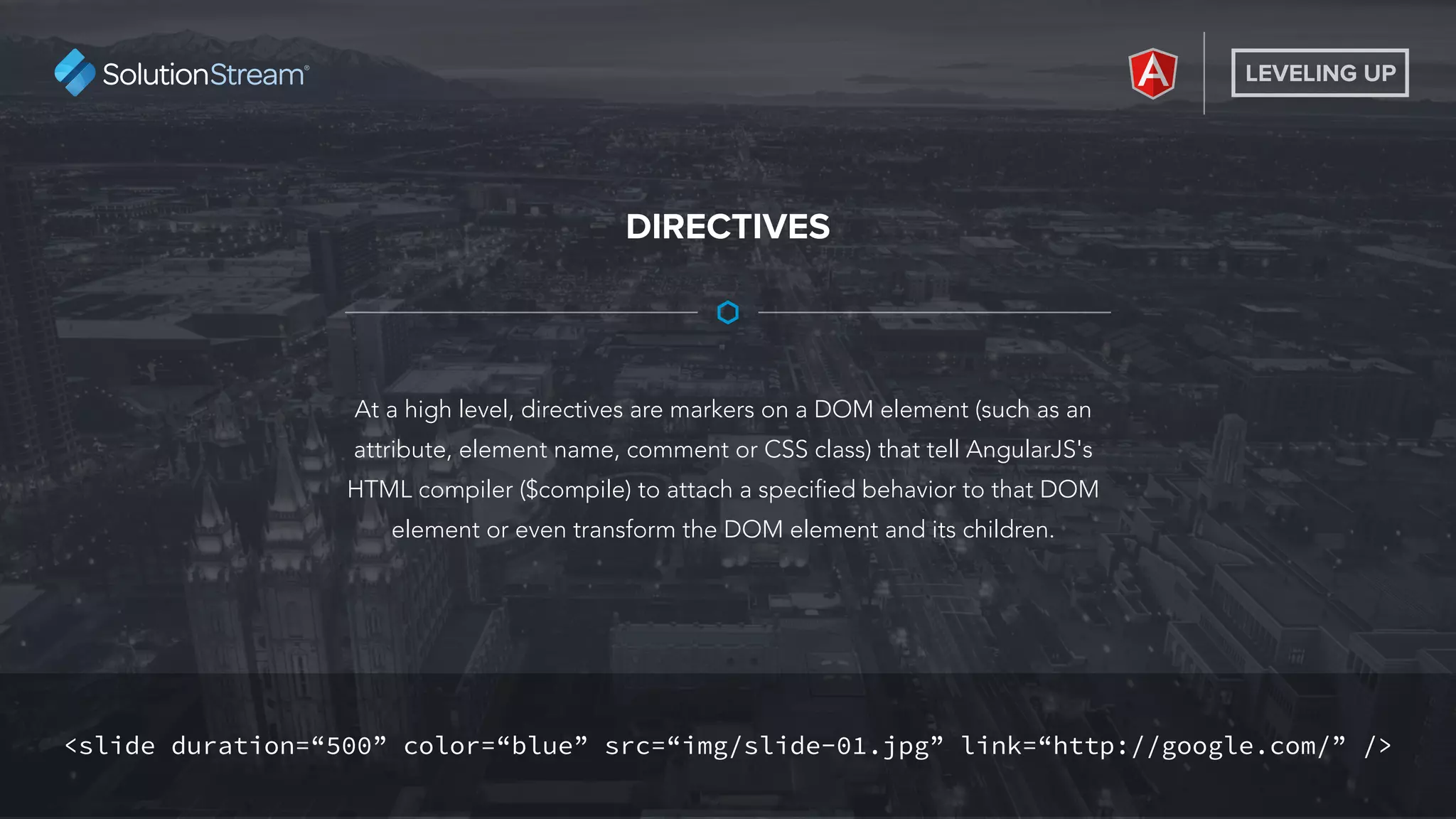
![LEVELING UPDIRECTIVES
<slides>
<slide ng-repeat=“slide in slides”
duration=“{{slide.duration}}”
color=“{{slide.color}}”
src=“{{slide.img}}”
link=“{{slide.link}}” />
</slides>
$scope.slides = [
{
img: ‘img/slide01.jpg’,
color: ‘red’,
link: ‘google.com’,
duration: ‘2000’
},
{
img: ‘img/slide02.jpg’,
color: ‘blue’,
link: ‘apple.com’,
duration: ‘3000’
},
{
img: ‘img/slide03.jpg’,
color: ‘purple’,
link: ‘theverge.com’,
duration: ‘2500’
},
{
img: ‘img/slide04.jpg’,
color: ‘green’,
link: ‘techcrunch.com’,
duration: ‘1500’
}
]
<ul class=“slider”>
<li class=“slide” style=“background-
color:red” data-duration=“2000”>
<a href=“google.com”>
<img src=“img/slide01.jpg” />
</a>
</li>
<li class=“slide” style=“background-
color:blue” data-duration=“3000”>
<a href=“apple.com”>
<img src=“img/slide02.jpg” />
</a>
</li>
<li class=“slide” style=“background-
color:purple” data-duration=“2500”>
<a href=“theverge.com”>
<img src=“img/slide03.jpg” />
</a>
</li>
<li class=“slide” style=“background-
color:green” data-duration=“1500”>
<a href=“techcrunch.com”>
<img src=“img/slide04.jpg” />
</a>
</li>
</ul>](https://image.slidesharecdn.com/levelingupwithangularjs-150311163545-conversion-gate01/75/Leveling-up-with-AngularJS-9-2048.jpg)
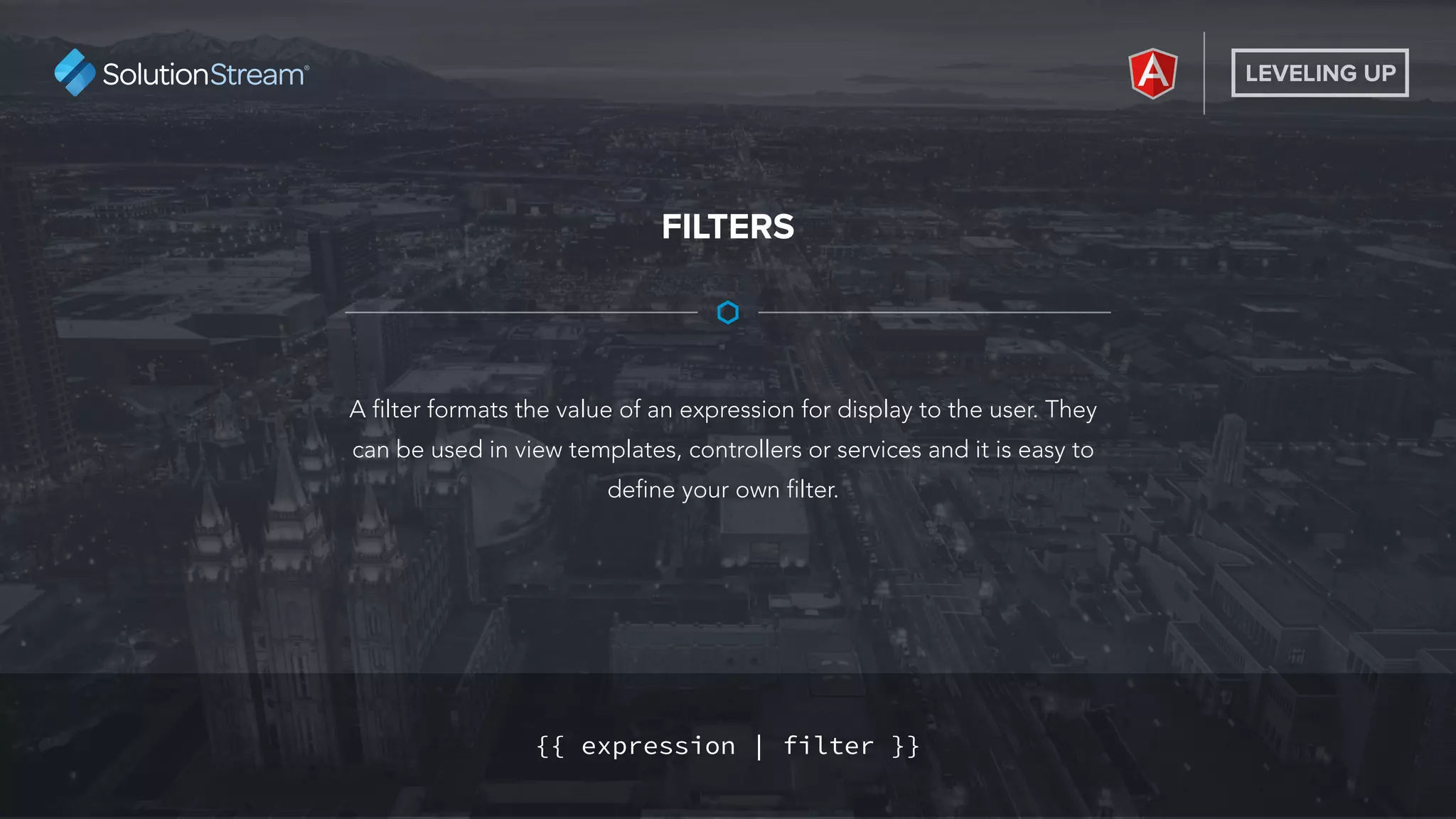
![LEVELING UP
Dependency Injection is a software design pattern that deals with how
components get hold of their dependencies. The Angular injector
subsystem is in charge of creating components, resolving their
dependencies, and providing them to other components as requested.
DEPENDENCY INJECTION
app.controller('DynamicFormCtrl', ['$scope', '$http', '$modal', '$filter',
function($scope, $http, $modal, $filter) { ... }]);](https://image.slidesharecdn.com/levelingupwithangularjs-150311163545-conversion-gate01/75/Leveling-up-with-AngularJS-11-2048.jpg)
